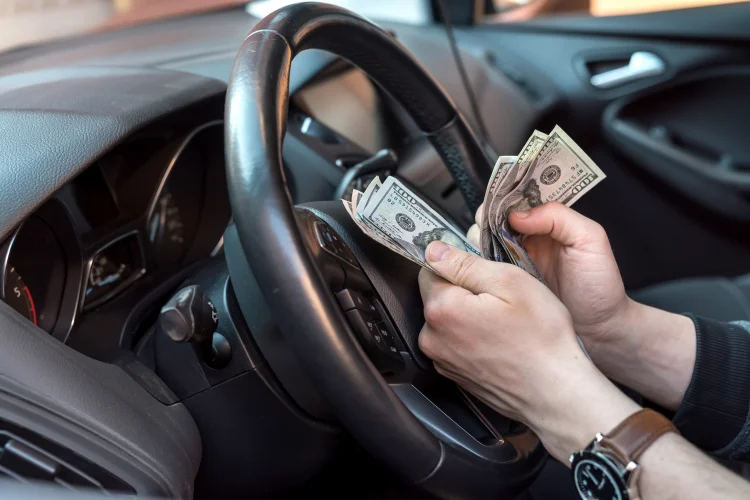Maximizing Value: A Fresh Look at Car Lease Buyouts
car lease buyout
5,126Leasing a car offers the flexibility of driving a new vehicle every few years without the commitment of ownership. However, as your lease nears its end, you face a critical decision: return the car, trade it in for another lease, or buy it out. While returning or trading in can feel like the default choice, opting for a lease buyout can often be the smartest move—if you know when and how to pull the trigger.
In this post, we’ll explore:
-
Why a lease buyout might be more attractive than you think
-
How to evaluate whether the buyout price makes sense
-
Timing strategies to maximize savings
-
Negotiation tips to lower your buyout cost
-
Potential pitfalls (and how to avoid them)

In this post, we’ll explore:
-
Why a lease buyout might be more attractive than you think
-
How to evaluate whether the buyout price makes sense
-
Timing strategies to maximize savings
-
Negotiation tips to lower your buyout cost
-
Potential pitfalls (and how to avoid them)
Why Buy Out Your Lease?
-
Equity Opportunities: When the market value of your vehicle exceeds the residual (buyout) price set in your lease agreement, you’ve built equity. Driving a popular or in-demand model can put you in a position to profit—or at least save—by buying out your lease.
-
Familiarity and Comfort: You know your car’s history—its maintenance record, quirks, and driving feel. Buying it out eliminates the uncertainty and inspection hassle that comes with turning it in.
-
Avoid Mileage and Wear Fees: Leases typically impose stiff penalties for excess miles and damage beyond normal wear. A buyout lets you sidestep these surprise charges.
-
Tax Advantages: In many states, taxes on a lease buyout are lower than on a new vehicle purchase, because you only pay sales tax on the residual value, not the total vehicle cost.
Is the Buyout Price Right? Performing a Quick Market Check
-
Use Online Valuation Tools: Compare your lease’s residual price against real-time valuations from Kelley Blue Book, Edmunds, or NADA Guides.
-
Check Local Listings: Browse listings for the same make, model, mileage, and trim in your area to see what sellers are asking. If comparable cars trade for more than your buyout amount, you’re in a good spot.
-
Factor in Fees and Taxes: Don’t forget acquisition fees, purchase option fees, and sales tax. Add those to the residual to get the “true” buyout cost.
Timing Is Everything: When to Initiate a Buyout
-
Early Buyout vs. End-of-Lease:
-
Early Buyout: Some leases allow you to purchase the car early. This can be advantageous if market values are rising and you want to lock in a lower price.
-
End-of-Lease Buyout: Your contract’s residual value is typically set at lease inception. Buying out at lease-end is more straightforward, with fewer administrative fees.
-
-
Market Trends: Keep an eye on used-car prices. In a rising market, an early buyout could save you money. Conversely, in a declining market, waiting until closer to lease-end might allow you to negotiate a discount from the leasing company.
Negotiation Tactics to Lower Your Buyout Cost
-
Request a Discount: Lessors may offer markdowns to avoid the hassle of reacquiring, inspecting, and re-marketing the vehicle. Always ask if they’ll reduce the residual.
-
Bundle Fees: Negotiate to have acquisition or purchase-option fees waived or reduced.
-
Use a Third-Party Lender: Shop around for financing. Online lenders often carry lower interest rates than dealer-arranged loans.
-
Leverage Dealer Relationships: If you’ve serviced the car at the dealership where you plan to buy it out, mention your loyalty. They may be more flexible.
Beware of Hidden Traps
-
Excessive Buyout Fees: Some contracts bury steep purchase-option fees. Review your lease agreement early to spot them.
-
Overpaying on Taxes: Confirm with your state DMV how sales tax is calculated on a lease buyout versus a new purchase.
-
Financing Add-Ons: Lenders may offer extended warranties or add-ons when finalizing the buyout.
Step-by-Step Buyout Roadmap
-
Review Your Lease: Identify the residual, purchase-option fee, and any early termination clauses.
-
Compare Market Values: Use KBB, Edmunds, and local listings to benchmark.
-
Contact Your Lessor: Request a formal buyout quote, including all fees and taxes.
-
Secure Financing: Pre-qualify with an online lender.
-
Negotiate Terms: Ask for fee waivers, discounts, and lower interest rates.
-
Finalize the Purchase: Sign the buyout paperwork, pay taxes and fees, and transfer the title.
Conclusion: Make the Buyout Work for You
A car lease buyout isn’t just a fallback—it can be a strategic financial move when handled correctly. By knowing the market, timing your decision, and negotiating like a pro, you can unlock hidden value in your lease and drive off into ownership on your terms.
Ready to explore your lease buyout options? Get started by applying with Cuvrd online, and get an assessment of your lease equity and savings potential. Let’s make your end-of-lease journey a win–win.
TL;DR: Unlock hidden equity in your lease by learning when to buy out your car, how to compare residuals to market value, and proven negotiation tactics to lower fees and taxes—so you can drive off with real savings and peace of mind.
— Sandra McVey
